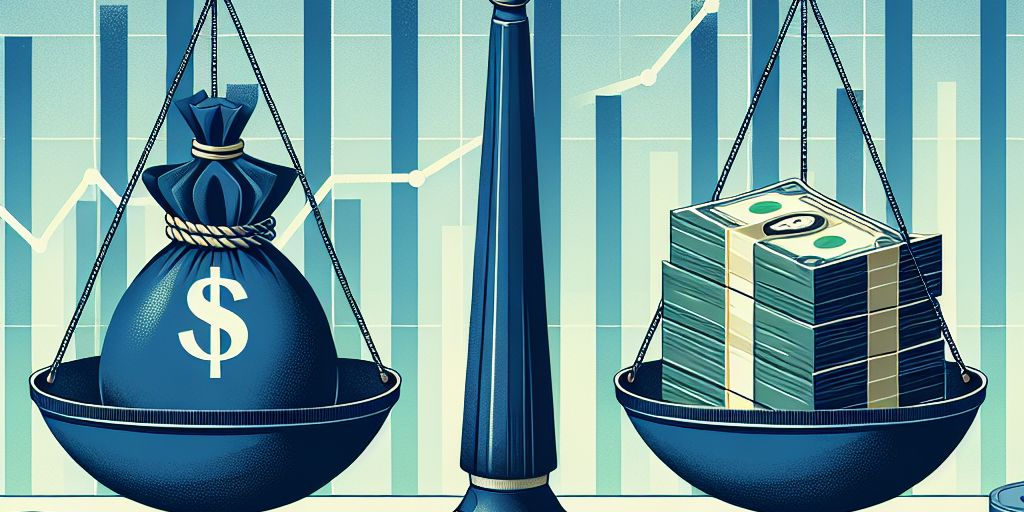Interest rates are a fundamental component of the financial world, acting as the price of borrowing money. Their effects ripple through various sectors of the economy, particularly in the realm of loans. Whether it’s for businesses, consumers, or government entities, the impact of interest rates on loans is profound, influencing borrowing costs, investment decisions, and overall economic health. This article aims to explore how interest rates affect loans and the broader implications for different stakeholders.
Understanding Interest Rates
Interest rates are essentially the cost of borrowing money, expressed as a percentage of the loan amount. Typically set by central banks, such as the Federal Reserve in the United States, interest rates can rise or fall based on various economic indicators and policy decisions. These fluctuations affect the economy by influencing consumer spending, business investment, and overall demand for credit.
The Link Between Interest Rates and Loan Costs
When interest rates rise, the cost of borrowing increases. This is because lenders demand higher returns to compensate for the opportunity cost of lending money as well as the risk involved. Conversely, when interest rates fall, borrowing costs decrease, making loans cheaper and more attractive.
Consumer Loans
For consumers, interest rates directly impact loans such as mortgages, auto loans, and personal loans. A high-interest rate environment makes these loans more expensive:
- Mortgages: Higher mortgage rates result in larger monthly payments, which can discourage home buyers, ultimately cooling the housing market.
- Auto Loans: Increased auto loan rates can deter consumers from purchasing new or used vehicles, affecting car sales and, by extension, the automotive industry.
- Credit Cards and Personal Loans: Higher rates lead to greater interest expenses, making it more costly for consumers to carry balances or take out unsecured loans, potentially reducing consumer spending.
Business Loans
For businesses, interest rates play a crucial role in financing operations and expansion. Higher rates increase the cost of borrowing capital, which can affect a company’s decision to invest in new projects, hire additional staff, or upgrade equipment. This can lead to:
- Reduced Investment: Companies may delay or forego capital expenditures due to increased financing costs.
- Impact on Small Businesses: Smaller firms, often more reliant on loans for growth, may find high-interest rates particularly burdensome, limiting their ability to compete and expand.
- Cash Flow Management: The cost of servicing debt rises, which can strain cash flow and affect profitability.
Broader Economic Implications
The relationship between interest rates and loans has far-reaching economic implications:
Economic Growth
Interest rates influence economic growth by affecting consumer spending and business investment. Low-interest rates typically stimulate economic activity by making loans more affordable, encouraging borrowing, and spending. On the other hand, high-interest rates can slow economic growth by discouraging borrowing and spending.
Inflation Control
Central banks often use interest rate adjustments as a tool to control inflation. By raising rates, they can reduce spending and borrowing, which helps to cool an overheating economy and control inflation. Conversely, lowering interest rates can stimulate spending and borrowing, countering deflationary pressures.
Financial Stability
Stable and predictable interest rates contribute to financial stability. Sudden or significant changes can disrupt financial markets, affecting asset prices, exchange rates, and investor confidence. Prudently managed interest rate policies help maintain an equilibrium that supports sustainable economic growth.
The Global Perspective
In a globally interconnected financial system, interest rate changes in major economies can impact other nations. For instance, a rate hike by the Federal Reserve can lead to capital outflows from emerging markets as investors seek higher returns in the US, potentially destabilizing those economies. Similarly, low rates in developed economies can drive capital into higher-yielding investments abroad, influencing global financial flows and exchange rates.
Conclusion
Interest rates wield significant influence over loans, impacting consumer behavior, business investment, and broader economic trends. Understanding this relationship is crucial for policymakers, businesses, and consumers alike, as interest rate changes can have both immediate and long-term effects on financial decisions and economic health. Whether rates are rising or falling, the underlying mechanics remain the same: interest rates serve as a pivotal lever in the intricate machinery of the economy.







